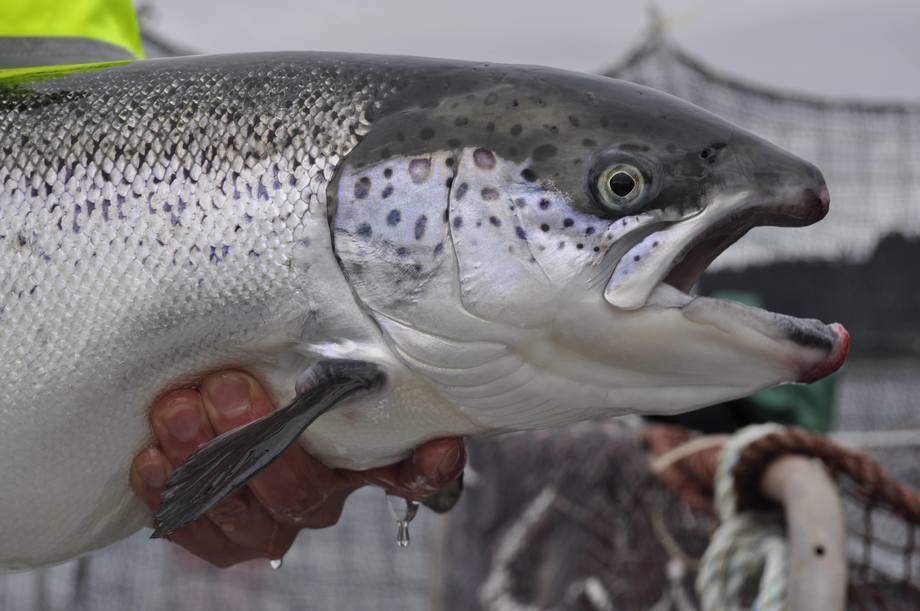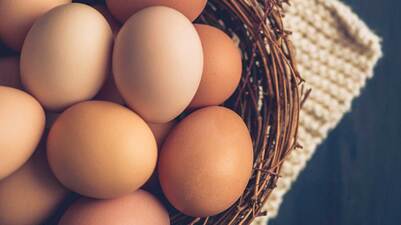|
Image source: fishfarmingexpert.com Highlights
Abstract A feeding trial was conducted to test the growth potential, nutritional utilization, liver health and fillet sensory parameters of sea-water Atlantic salmon (Salmo salar L.) fed diets with increasing substitution of fish meal with insect meal. The insect meal was produced from black soldier fly larvae (Hermetia illucens, L.). Triplicate sea-cages of salmon were fed one of four isonitrogenous and isolipidic diets for 16 weeks. The control diet (IM0) contained 100 g kg−1 fish meal, which was replaced up to 100% with insect meal (33% (IM33), 66% (IM66) and 100% (IM100)), corresponding to dietary insect meal inclusion levels at 50 g kg−1, 100 g kg−1 and 150 g kg−1, respectively. Replacing the dietary fish meal with insect meal did not affect the apparent digestibility coefficients (ADC) of protein, lipid, amino acids and fatty acids, or the digestive enzyme activities. Feed intake, daily growth increase, and feed conversion ratio were also unaffected by the inclusion of insect meal in the diets. Whole body protein, lipid and amino acid composition were not affected by dietary substitution of fish meal with insect meal, while the whole-body fatty acid composition generally reflected that of the diets. Liver lipid accumulation was not affected by replacing the fishmeal with insect meal, as assessed by both histological examinations and chemical analyses. The sensory testing of the fillet revealed only small changes in the fillet sensory quality. In general, this study showed that a total replacement of fish meal with black soldier fly larvae meal in the diets of sea-water Atlantic salmon was possible without negative effects on growth performance, feed utilization, nutrient digestibility, liver traits or the sensory qualities of the fillet.Replacing FM with IM had no significant effects on whole fish dry matter, crude protein, crude lipid, ash or amino acid composition. The whole-body FA composition of the salmon was, however, significantly affected by IM inclusion. By including IM in the diets, the concentration of lauric acid increased (0.5–1.6% of the whole-body total FA in the IM fed fish), while this FA was below the quantification limit in the whole fish fed diets without IM. The concentration of EPA and DHA as well as the n-3/n-6 ratio increased significantly in a linear manner with increasing inclusion of IM at 33 (IM33), 66% (IM66) and 100% (IM100) in the diets. The concentrations of ARA, PUFA and stearidonic acid was not affected by dietary inclusion of IM. Conclusion In this study, we evaluated the effects of graded inclusion level of a partially defatted black solider fly larvae meal on growth performances, digestibility, nutrient utilization, liver health and fillet sensory qualities of Atlantic salmon of a commercially relevant size. Only minor effects were detected of replacing up to 100% of the fishmeal with the insect meal. Therefore, our conclusion is that the insect meal made from BSF is a nutritionally appropriate source of protein for sea-water stage Atlantic salmon. Source Belghit et al., 2019 Summarized by Rawane Hamade B. Eng, Production Engineer
3 Comments
Article by the Revista Brasileira de Zootecnia in 2016
Effect of using insect larvae meal as a complete protein source on quality and productivity characteristics of laying hens Mohammed Farooq Abdulhameed Al-Qazzaz1 , Dahlan Ismail1 , Henny Akit1 , Lokman Hakim Idris University Putra Malaysia, Serdang, Selangor, Malaysia. ABSTRACT This study was conducted to evaluate the effect of black soldier fly larvae (BSFL) as a source of protein in layer diets on product performance, egg quality, hatchability, fertility, and sensory characteristics of eggs. The BSFL contained a high percentage of protein (559.9 g kg−1 ), metabolizable energy (696.3 kcal kg−1 ), crude fat (18.6 g kg−1 ), and dry matter (178 g kg−1 ) and a good balance of amino acids. A total of 54 Arabic strain hens at nine months of age were mixed with nine cocks at 12 months old; all were divided into three treatments. The diets were formulated based on three levels of energy-toprotein ratio: 155, 140, and 170. The BSFL meal was added at 0, 50, and 10 g kg−1 respectively. The results showed that feed intake, weight gain, Haugh unit, and hatchability were not affected by dietary treatments with BSFL. However, there was significant improvement in hen day egg production and hen house egg production due to dietary treatments of BSFL. Also, feed conversion ratio, egg weight, shell thickness, shell weight, egg yolk color, fertility, and egg mass were affected by dietary treatments. In addition, a significant improvement was observed in appearance, texture, taste, and acceptance of eggs of hens fed BSFL at 50 g kg−1 . The odor was not affected by dietary treatments. Black soldier fly larvae can be a good source of protein in layer diets. INTRODUCTION Feed cost can form up to 70% of the total cost of poultry production. Animal protein sources are preferred over plant protein sources because animal proteins contain a good balance of essential amino acids and an excellent content of vitamins (Saima et al., 2008). Fish meal is a high-quality protein source used mainly in poultry diets. However, the high price of fish meal has led to a search for alternative protein sources. Insects are natural food sources for poultry, and they are considered a fundamental protein source for poultry in the wild. Insects contain a good amount of protein, which can be as high as 64% (Hwangbo et al., 2009) to as low as 39.16% (Atteh and Ologbenla, 2015), with a high balance of essential amino acids. Many insects have been used in poultry feed, such as grasshoppers (Hassan et al., 2009), house flies (Hwangbo et al., 2009), and mealworms (RamosElorduy et al., 2002). Black soldier fly larvae (Hermetia illucens Linnaeus) have been found to be abundant in most areas of Malaysia. They are called latrine larvae because they can be found around the manure piles of cattle, sheep, and poultry (Van Huis, 2013). Black soldier flies are not found in human foods or habitats because they do not have functional mouth parts. Black soldier fly larvae (BSFL) have been used to solve some environmental problems related to manure and other organic wastes, such as decreasing manure mass, moisture content, and offensive odors (Barry, 2004; Newton et al., 2005). In addition, they have been used to produce high-value feedstuff for cattle, pigs, poultry, and fish (Newton et al., 2005). The proximate composition of BSFL is variable according to the processing method (Aniebo and Owen, 2010). The objective of this study was to evaluate the effect of BSFL as a protein source in layer diets on growth performance, egg quality, fertility, hatchability, and sensory characteristics of eggs. You will be able to find the full article here: http://www.scielo.br/pdf/rbz/v45n9/1516-3598-rbz-45-09-00518.pdf |
from researchers all over the worldWe collect research papers and scientific publications to share knowledge around the Black Soldier Fly ArchivesCategories |



 RSS Feed
RSS Feed